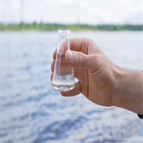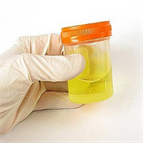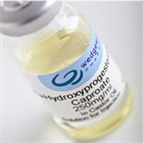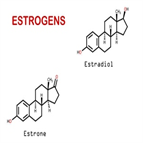Find methods for your needs
Refine by Feature
Displaying 1-5 of 9 results for Tag: TSQ Endura
Trace analysis of pharmaceuticals and organic contaminants in water
Instrument Type: LCMSMSWe present the reliable and accurate quantitative analysis of contaminants at the pg/mL level in drinking water using the Thermo Scientific EQuan MAX Plus LC-MS system coupled to the Thermo Scientific TSQ Endura triple quadrupole mass spectrometer. Excellent reproducibility was shown for the target compounds in tap water using 1 mL injections at 0.37× maximum effluent concentration.
AN661: Fast routine analysis of polar pesticides in foods by suppressed ion chromatography and mass spectrometry
Instrument Type: ICMSWe present a reliable and cost-effective IC-MS/MS multi-residue method for high-throughput screening and quantitation of polar pesticide residues and their metabolites in food matrices below the current legislative requirements. In contrast to methods described in the literature, sample preparation is simplified and the use of ion chromatography speeds up the separation.
Quantitation of 122 Drugs in Urine by Triple Quadrupole Mass Spectrometry
Instrument Type: LCMSMSForensic toxicologists face an ever-expanding list of compounds for analysis. This note presents work done using a next-generation triple quadrupole mass spectrometer with fast SRM acquisition speed for quantitation of 122 analytes in a single chromatographic run, where scan speed does not impact sensitivity or quantitative performance. Compounds analyzed include opiates, opioids, benzodiazepines, barbiturates, amphetamines, tricyclic antidepressants, illicit compounds, and more. For forensic use only.
High-Throughput LC-MS/MS Quantification of 17-Hydroxyprogesterone (17-OHP) in Human Blood Serum for Clinical Research Purposes
Instrument Type: LCMSMS17-Hydroxyprogesterone (17-OHP) is a biosynthetic precursor to other steroids such as corticosteroids, androgens, and estrogens. It is converted to 11-deoxycortisol by 21-alpha-hydroxylase or to androstenedione by 17, 20 lyase. Researchers investigating how these enzymes function need to measure 17-OHP within an analytical range of 10 to 1,000 ng/dL (0.3 to 30 nmol/L) in blood serum. 17-OHP readily forms positive ions by atmospheric-pressure chemical ionization (APCI), which is less prone to matrix effects than electrospray ionization (ESI).
High-Throughput LC-MS/MS Quantification of Estrone (E1) and Estradiol (E2) in Human Blood Plasma/Serum for Clinical Research Purposes
Instrument Type: LCMSMSEstrone (E1) and estradiol (17-beta-estradiol or E2) are two of several estrogens involved in the development and function of female anatomical and physiological characteristics and processes such as the menstrual cycle. Researchers seek to quantify E1 and E2 within an analytical range of 5 to 500 pg/mL (18.5 to 1,850 pmol/L) in blood plasma or serum. E1 and E2 form negative ions by deprotonation in both ESI and APCI MS sources. In order to robustly achieve the needed quantitation limits, most researchers use dansyl chloride to form positively charged derivatives of these and other estrogens.





